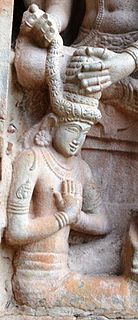| Millennium: | 2nd millennium |
|---|---|
| Centuries: | |
| Decades: | |
| Years: |
| 1042 by topic |
|---|
| Leaders |
| Birth and death categories |
| Births – Deaths |
| Establishments and disestablishments categories |
| Establishments – Disestablishments |
| Gregorian calendar | 1042 MXLII |
| Ab urbe condita | 1795 |
| Armenian calendar | 491 ԹՎ ՆՂԱ |
| Assyrian calendar | 5792 |
| Balinese saka calendar | 963–964 |
| Bengali calendar | 449 |
| Berber calendar | 1992 |
| English Regnal year | N/A |
| Buddhist calendar | 1586 |
| Burmese calendar | 404 |
| Byzantine calendar | 6550–6551 |
| Chinese calendar | 辛巳年 (Metal Snake) 3738 or 3678 — to — 壬午年 (Water Horse) 3739 or 3679 |
| Coptic calendar | 758–759 |
| Discordian calendar | 2208 |
| Ethiopian calendar | 1034–1035 |
| Hebrew calendar | 4802–4803 |
| Hindu calendars | |
| - Vikram Samvat | 1098–1099 |
| - Shaka Samvat | 963–964 |
| - Kali Yuga | 4142–4143 |
| Holocene calendar | 11042 |
| Igbo calendar | 42–43 |
| Iranian calendar | 420–421 |
| Islamic calendar | 433–434 |
| Japanese calendar | Chōkyū 3 (長久3年) |
| Javanese calendar | 945–946 |
| Julian calendar | 1042 MXLII |
| Korean calendar | 3375 |
| Minguo calendar | 870 before ROC 民前870年 |
| Nanakshahi calendar | −426 |
| Seleucid era | 1353/1354 AG |
| Thai solar calendar | 1584–1585 |
| Tibetan calendar | 阴金蛇年 (female Iron-Snake) 1168 or 787 or 15 — to — 阳水马年 (male Water-Horse) 1169 or 788 or 16 |

Year 1042 ( MXLII ) was a common year starting on Friday (link will display the full calendar) of the Julian calendar.










